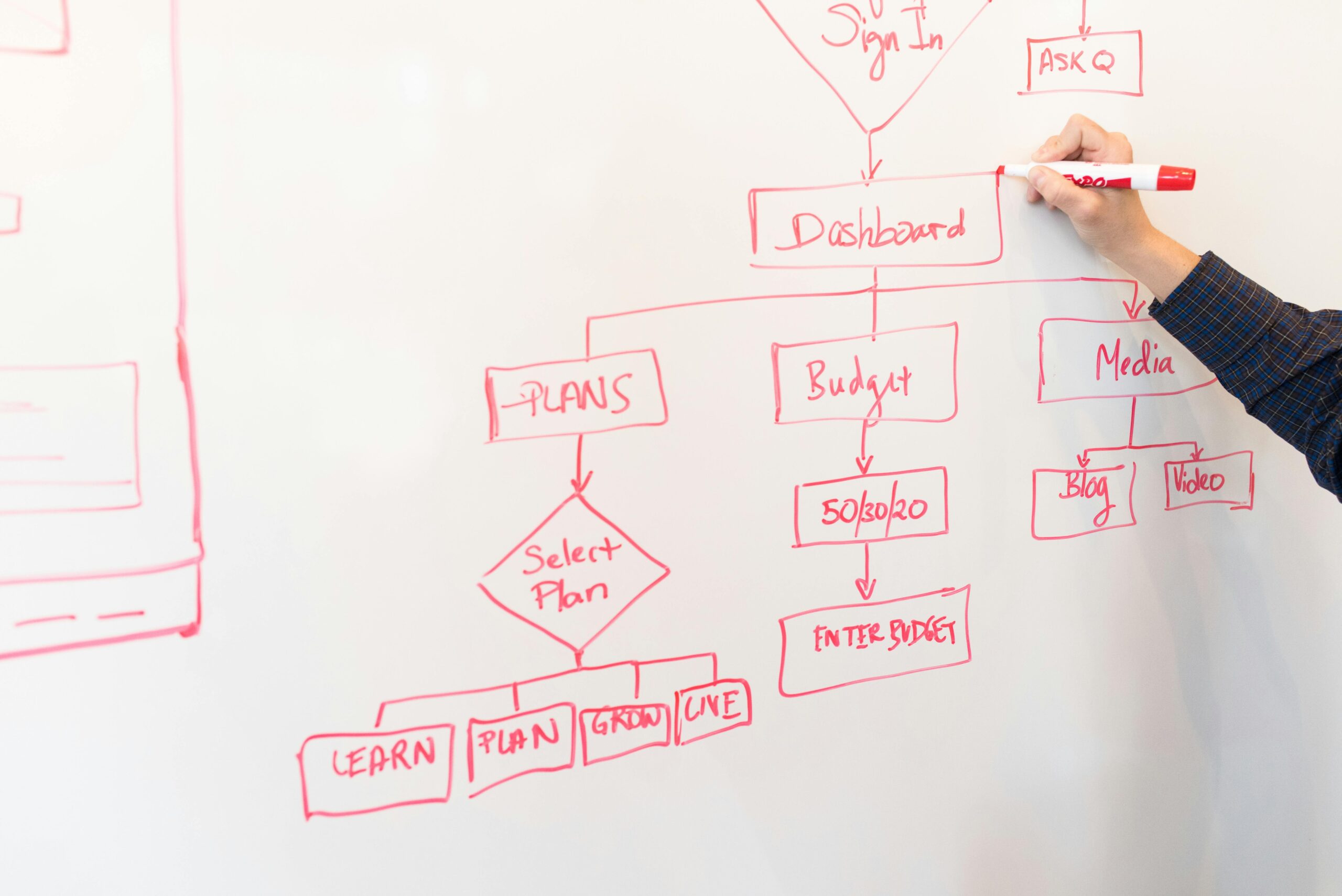Are you struggling to figure out the Steps to Develop a Business Process Plan and keep your business processes organized and efficient?
Developing a business process plan can help streamline your operations and boost productivity. But where do you start?
Creating a business process plan may seem daunting, but it doesn’t have to be.
By following these four simple steps, you can develop a plan that aligns with your business goals and sets you up for success.
Table of Contents
ToggleKey Takeaways
- Map & Refine: Uncover bottlenecks, streamline processes.
- Align & Own: Align plan with goals, assign clear ownership.
- Track & Adapt: Monitor progress, adjust as needed.
- Evolve & Grow: Treat plan as living document, adapt for growth.
Understanding Business Process Planning
Simply put, business process planning is the act of developing a strategy for how your organization will operate.
It involves mapping out your existing processes, identifying areas for improvement, and creating a framework for how things should be done moving forward.
Now, you may be thinking, “Sounds easy enough. I’ll just create a process plan and call it a day.”
But unfortunately, it’s not quite that simple.
Developing a successful business process plan requires careful thought, consideration, and a solid understanding of your organization’s goals and objectives.
To give you a better understanding , in this section, I’ll walk you through the key elements of business process planning, including how to develop a plan that aligns with your strategic objectives and benefits your organization as a whole.
The Framework of Business Process Planning
At its core, a business process plan is designed to help your organization operate efficiently and effectively.
This requires a framework that outlines how each step of a given process should be completed, who is responsible for completing it, and what tools or resources are needed along the way.
SEE ALSO:
- How to Master Business Process Design Easy Steps
- How to Build a Cohesive Project Management Team
- Achieve Business Goals with Business Process Management
- 5 Benefits of Business Process Management for Your Business
- Streamline Your Workflow with a Tailored Business Process Guide
Phase 1: Business Process Mapping and Analysis
The first step is to map out your current processes using flowcharts or diagrams.
This will help you understand how things are currently done and identify any inefficiencies or bottlenecks.
Trust me, this is a crucial step in developing a process plan that will actually make a difference.
Once you’ve got your processes mapped out, it’s time to analyze them.
Take a long, hard look at each step and ask yourself, “Is this really necessary? Could we streamline this?” Look for areas where you can reduce waste, eliminate unnecessary steps, and improve overall efficiency.

Phase 2: Designing and Developing the Process Plan
The key to effective business process planning is to align your plan with your strategic objectives.
A good process plan should be designed to support your business goals, so take some time to consider what these goals are and how your plan can help you achieve them.
Let’s break down the steps you need to follow to develop an effective business process plan:
- Identify the process objectives: Start by defining your process objectives. What are you trying to achieve with this plan? What outcomes do you expect? Keep in mind that your objectives should be specific, measurable, achievable, relevant, and time-bound (SMART).
- Identify the process steps: Once you have your objectives defined, it’s time to think about the steps you’ll need to take to achieve them. Break down the process into smaller steps and define each one in detail. You may find it helpful to create a flowchart or diagram to visualize the process.
- Assign responsibilities: Who will be responsible for each step in the process? Make sure each step has a clear owner, and that everyone knows what their responsibilities are.
- Set timelines and deadlines: Every plan needs a timeline. Set realistic timelines and deadlines for each step in the process, and make sure to track your progress along the way.
- Test and refine: Once your plan is in place, it’s time to test it out in a controlled environment. This will allow you to identify any potential issues and refine your process accordingly.
Keep in mind that business process planning is an iterative process.
You may find that you need to tweak your plan as you go, and that’s okay. The key is to stay flexible, be open to feedback, and continue to refine your plan until it’s as effective as possible.
Now that you have a solid understanding of how to develop a business process plan, it’s time to put your plan into action.
In the next section, we’ll explore the necessary steps for successful implementation and management of your process plan.
Phase 3: Implementing and Managing the Process Plan
1. Communicate and Train:
Get everyone on board: Clearly explain the plan to everyone involved, so they understand their role and why it’s important.
Bridge the knowledge gap: Train employees on any new processes or technologies they’ll be using.
2. Implement and Adapt:
Put the plan in action: Start making the necessary changes to your existing processes or introduce new ones.
Be flexible: Be prepared to adjust the plan as needed, and don’t hesitate to seek feedback from everyone involved.
3. Track and Improve:
Monitor your progress: Keep track of how well the plan is working and what the results are.
Identify areas for improvement: Use the data you collect to find ways to make the process even better.
Review and update: Regularly check if the plan still aligns with your business goals, and make adjustments if needed.
4. Manage for Success:
Assign ownership: Appoint a process owner or team to oversee implementation and ensure everyone is accountable.
Continuously assess: Regularly review your processes to identify any bottlenecks or areas for improvement.
Remember: By following these steps and focusing on clear communication, adaptability, and ongoing monitoring, you can successfully implement and manage your business process plan, ultimately achieving your goals.

The Continuous Journey: Optimizing and Refining Your Business Processes
Congratulations on creating a strong business process plan! Now comes the exciting part: continuously optimizing and improving your processes to stay ahead and ensure your plan remains impactful.
The key lies in ongoing development:
- Dedicate resources: Regularly review your processes to identify areas for improvement. This requires dedicated time and resources.
- Embrace optimization: Utilize business process optimization (BPO) to critically analyze your workflows, pinpoint inefficiencies, and eliminate bottlenecks.
- Map for improvement: Conduct further process mapping by breaking down each step into smaller components for detailed analysis, facilitating precise pinpointing of improvement opportunities.
Remember, your process plan’s effectiveness directly correlates to its ability to support your strategic goals. Continuous refinement ensures your plan remains relevant and impactful.
Embrace change! Your business process plan should be a living document, evolving alongside your growing and changing organization.
Conclusion:
You’ve reached the finish line of this guide on building a powerful business process plan.
You now have a solid grasp of the four key steps involved, along with the crucial practice of continuous improvement to maximize efficiency and effectiveness.
Developing a business process plan requires effort, but it’s an essential investment in your organization’s success.
Through careful planning and strategic implementation, you can craft a roadmap that propels your business forward.
Don’t wait! Start crafting your business process plan today and watch your organization reach new heights!
FAQ
What is a business process plan?
A business process plan is a strategic document that outlines the steps and actions needed to successfully manage and improve business processes within an organization.
Why is business process planning important?
Business process planning is important because it helps organizations streamline their operations, improve efficiency, and achieve their business goals more effectively.
What are the five simple steps to develop a business process plan?
The five simple steps to develop a business process plan are understanding business process planning, business process mapping and analysis, designing and developing the process plan, implementing and managing the process plan, and optimizing and improving business processes.
How can business process planning benefit my organization?
Business process planning can benefit your organization by increasing productivity, reducing costs, improving customer satisfaction, and enhancing overall business performance.
What is the first step in developing a business process plan?
The first step in developing a business process plan is to map and analyze your existing processes to gain a comprehensive understanding of how your organization operates.
How do I implement and manage the process plan?
To implement and manage the process plan, you need to establish clear goals and objectives, assign responsibilities, regularly monitor performance, and adapt the plan as needed to ensure its success.
Why is optimizing and improving business processes important?
Optimizing and improving business processes is important because it allows organizations to stay competitive, adapt to changing market conditions, and continuously strive for efficiency and effectiveness.
What should I consider when developing a business process plan?
When developing a business process plan, you should consider aligning the plan with your strategic objectives, involving key stakeholders, leveraging technology, and regularly reviewing and updating the plan to reflect changing business needs.
Is a business process plan a one-time document?
No, a business process plan is not a one-time document. It should be continuously reviewed, updated, and improved to ensure it remains relevant and effective in supporting your organization’s goals.
How long does it take to develop a business process plan?
The time it takes to develop a business process plan can vary depending on the complexity of your organization and processes. It is recommended to allocate sufficient time for research, analysis, planning, and implementation.






